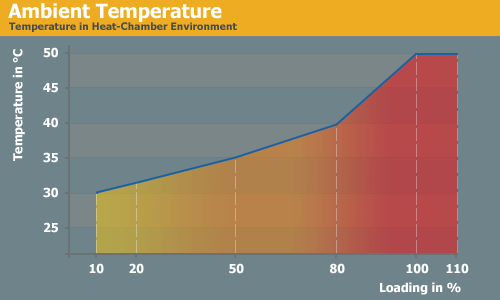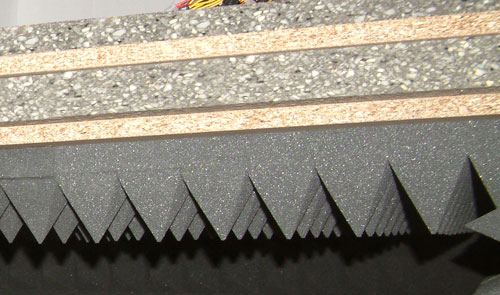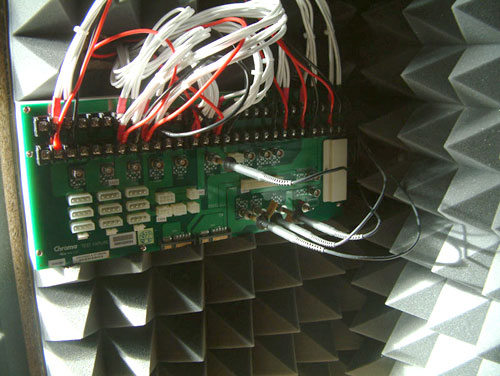Super Flower Amazon 650W Power Supply
by Christoph Katzer on October 16, 2008 3:00 AM EST- Posted in
- Cases/Cooling/PSUs
Testing with the Chroma ATE Programmable Load

Our test equipment consists of two Chroma programmable DC Loads that enable us to test power supplies with an output of up to 1500W. The biggest advantage of the Chroma DC Loads is simply the high precision it provides. It can measure differences as small as 0.001V and 0.0001A, which will provide us with best-in-class results.
When programming the Chroma with specific amounts of load calculated according to the ATX norm, we are able to load power supplies to an exact percentage. We can now show results at every specific percentage needed. To get the best overview of a power supply, we load each unit with 10%, 20%, 50%, 80%, 100%, and 110% of the specified output. This is easy to calculate for a 1000W power supply: the 10% load is 100W and 110% load is 1100W. Remember that this is the amount of power the PSU delivers; due to inefficiencies, a power supply will actually draw more power from the wall.
Note: If you would like to know more about our testing methodology, equipment, and environment, please read our PSU testing overview.
We have added an additional 10% on the highest load to see how the units perform with overload. This test will be performed in all future reviews. The overload test is performed at room temperature as well as under more stressful conditions; to ensure we are not too cruel to the power supplies, we will keep the ambient temperature at 50°C in the stress test. Experience shows that many units can stand the overload at room temperature but will experience problems with higher temperature and overload together. Only the best-built units will survive this.

The Testing Environment
There is one flaw in testing power supplies with programmable loads while trying to measure the sound pressure levels at the same time. Because the programmable loads get very loud, there is no chance of hearing the power supply on the test stand. In order to make accurate measurements of the noise levels we needed a way to separate the test unit and the programmable loads. Our solution was to build a very thick box around the unit.

We concluded that a five-layer box with a total thickness of 6" (15cm) containing two layers of wood and three layers of special foam would suffice. It is designed as a box within a box. The inner box does not touch any part of the outer box, making it difficult for acoustic noise to pass through in the form of vibration. Each box is isolated on both sides with a layer of heavy foam that is normally used to insulate engines. On the inside we have an additional layer of 4" (10cm) thick pyramidal foam on every side of the box to eliminate the acoustic waves coming from the test object as well as we can.

To ensure a completely closed system we installed the printed circuit board that the connectors of the power supply are attached to inside the anechoic room/box. In other box designs, you would need to put all the cables through the wall. Unfortunately, that would result in the inside of the box not being fully isolated anymore. Our design keeps everything that needs to be connected inside of the box and maintains isolation.










20 Comments
View All Comments
Choppedliver - Tuesday, October 21, 2008 - link
Did I miss something or did the reviewer not tell us how much this thing costs and where you can get it?Christoph Katzer - Wednesday, October 22, 2008 - link
"The only real question we have is pricing. We will have to wait until Super Flower begins shipping these units to get a price quote."In the time you wrote that totally unnecessary post you could have found it on the last page.
Choppedliver - Sunday, October 26, 2008 - link
Obviously I missed it, which is why I said "Did I miss something"And for your information dickwad, I looked on all the pages, just missed that last sentence. It is possible. I goofed. Don't be such a little bitch about it.
I thought pricing info would be on the first page where it says "Prices"... silly me, I thought that would be prices for this product reviewed, when in fact it's just revenue generating advertisements ( which I DID click on because I did THINK those were the prices for this product... your welcome. Send those few dollars to the JWAP Foundation. ( Journalists Who Aren't Pussies )
Let me rescend my apology. I read the article. Right below where it says
Date: October 16th, 2008
Topic: Cases/Cooling/PSUs
Manufacturer: Super Flower Inc.
Author: Christoph Katzer
It then says:
Prices
- TECHONWEB $122.91
- HP Small/Medium Business $29.89
- Dell $99.99
- Dell SMB $39.99
- HP Small/Medium Business $40.35
- Dell $99.99
Silly me, Im thinking this is a great deal! It doesnt say anywhere on this first page that this is a "not yet shipping" product.
Why would you? Its obvious that the advertisements are strategically placed to generate clicks through trickery.
Spacecomber - Thursday, October 16, 2008 - link
"Several years back their units were a lot more common and you could find them in online shops around the globe, but their presence has been fading. However, we have reviewed a few other brands that were built by Super Flower."For those whose memory isn't all that great, and who are too lazy to go back through the previous P/S reviews, could you remind us which other power supplies that have been reviewed were built by SuperFlower?
Christoph Katzer - Thursday, October 16, 2008 - link
Kingwin for example: http://www.anandtech.com/casecoolingpsus/showdoc.a...">http://www.anandtech.com/casecoolingpsus/showdoc.a...You can recognize other SuperFlowers by their distinctive heatsink design and the cable management with the special connectors. Some Topower builds have the same cm-connectors though, since it's actually their patent but until now only Tagan used them (afaik).
Souka - Thursday, October 16, 2008 - link
Only thing I see good about this PSU is the fan and resulting noise (lack of) from it.Voltages are too far out of alignment, and the ripple isn't great.
symbul - Monday, October 20, 2008 - link
You are KIDDING about the ripple, right? I mean, a max 7.87 mV (if accurate in the retail version) is a great spec. Even the 650W Antec Signature (which is the best 650W out there) can't do that...Spivonious - Thursday, October 16, 2008 - link
That 12V graph looks pretty shaky. What does that mean in terms of the voltage/power delivered?Spacecomber - Thursday, October 16, 2008 - link
I was looking through the comments to see if anyone had any insight on how to read that graph, too, since it looked to me like what I would assume to be rather "rippled", especially at full power.On another topic, with no production units available and therefore no firm pricing, this kind of preview is interesting, but it is not as helpful as a review of something that I can actually buy and therefore determine an actual value for. Certainly, we haven't run out of available power supplies to review at this point, have we?
HOOfan 1 - Thursday, October 16, 2008 - link
below 8mV of ripple...is extremely low. So low I am not sure I believe it.